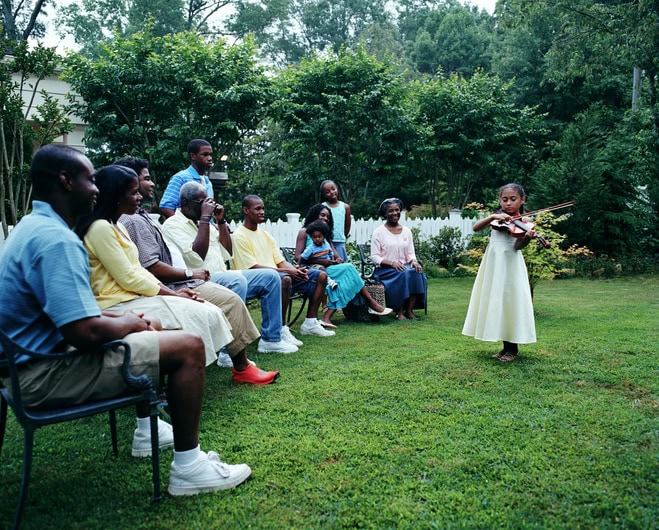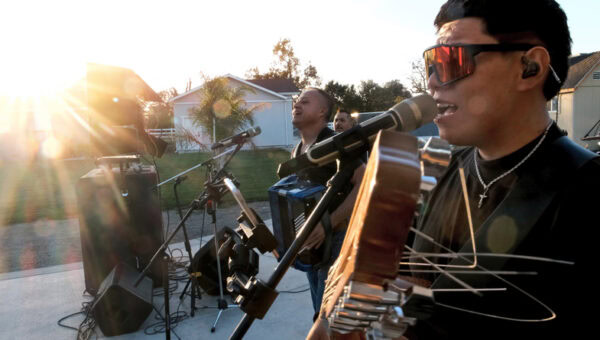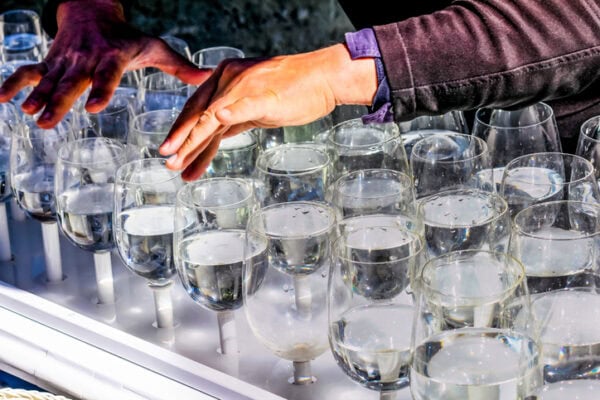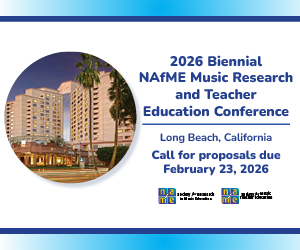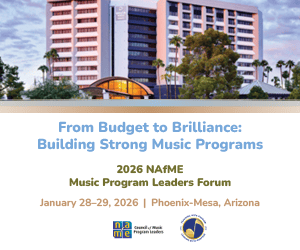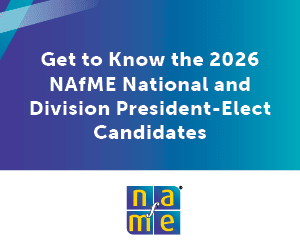/ News Posts / Six Creative Adventures for Music Educators This Summer
Six Creative Adventures for Music Educators This Summer
By NAfME Member José Valentino Ruiz, Ph.D.
Summer isn’t just for rest—it’s for reset.
For music educators, summer is a sacred window between the exhsaustion of performance assessments and the thrill of new fall beginnings. But beyond the beach trips and overdue naps (both very necessary), summer offers something more: space to experiment, dream, and stretch your creative muscles in ways the academic calendar rarely permits.
Below are six imaginative and energizing summer challenges designed to awaken your artistry, deepen your joy, and fuel your professional journey. These aren’t just to-do list items—they’re permission slips to rediscover your own musicianship and sense of wonder.
-
Curate a One-Day DIY Music Festival
Create your own intimate music festival in your backyard, garage, or local community center. Pick a theme (Global Grooves? Women in Jazz? Lo-Fi & Lemonade?), gather a few local performers or student alumni, and make it happen.
Want to take it to the next level?
- Include workshops in songwriting or beat-making
- Invite a visual artist to do live painting
- Livestream it on your program’s social media page
This isn’t just for fun (though it will be). It’s a testbed for learning how to produce your own events—something you can bring back to your school or district in the fall.
Creative Benefit: Cultivates entrepreneurial skills, community engagement, and event design insight.
-
Make a 3-Song EP with a Limitation
Challenge yourself to compose, record, or arrange a 3-song EP—but add a twist. Choose a playful limitation to push your creativity. For example:
- Only use one instrument (plus voice)
- Only use found sounds from your kitchen
- Only write in odd meters
- Only create with middle school-level software
Limitations force innovation. By removing access to your “usual” tools, you’ll find new tricks that refresh your approach to teaching and music-making.
Creative Benefit: Sparks originality through constraint, builds empathy for student creativity.
-
Create a “Museum of Me” Installation
Turn a room in your home (or a wall) into a personal exhibit—featuring:
- Your first instrument or sheet music
- Photos from performances
- Letters from students
- Notes from failed experiments that still mattered
Invite close friends or family to walk through it with you—or share it virtually. This is more than nostalgia; it’s a way of reflecting on how far you’ve come and reclaiming your creative identity outside of your school badge.
Creative Benefit: Reinforces self-worth, artistic legacy, and personal vision.
-
Score a Silent Film (or One of Your Favorite Scenes on Mute)
Choose a short silent film (or mute the audio on a classic film scene) and compose your own soundtrack. Use your main instrument or digital tools to build a sonic world that tells the story.
Make it fun or dramatic. Score “Charlie Chaplin” with jazz flute. Give “Pride and Prejudice” a funk makeover. Then, share it with your students or fellow educators in the fall as an example of cross-modal creativity.
Creative Benefit: Trains musical storytelling, builds media composition chops, and re-engages musical intuition.
-
Build Your Dream Interdisciplinary Lesson—Just for You
Design the music lesson you’ve always wanted to teach—but haven’t had time for. No curriculum constraints. No district rubrics. This one’s just for you.
Maybe it’s:
- A unit on Afro-Caribbean percussion and physics
- A songwriting challenge inspired by astronomy
- A collaborative lesson between music and culinary arts (rhythms and recipes, anyone?)
Map it out. Make a playlist. Dream it into a full experience. You don’t have to teach it yet—but you might want to.
Creative Benefit: Fosters long-term curriculum vision and playful intellectual curiosity.
-
Join or Start a Collaborative “Creative Sprint” Group
Gather a few fellow music educators (or artists in other disciplines) and commit to a 14-day creative sprint. Each day, you send each other a small creative artifact—could be a 30-second audio clip, a teaching idea, a visual score, a poem, a playlist, a dance move. No critique, just celebration.
Apps like GroupMe, Marco Polo, or even Instagram DMs make it easy to stay connected. The goal isn’t perfection—it’s presence. It’s permission to make things without pressure.
Creative Benefit: Reignites play, builds accountability, and opens you to joyful risk-taking.
Permission to Play
Too often, summer becomes a productivity trap disguised as rest. But the goal of creative rest isn’t inactivity—it’s renewal.
This summer, take time to become a student of your own curiosity again. Whether through a backyard concert, a film score experiment, or a small act of artistic rebellion, remember that your best teaching emerges from your most alive self.
The world needs music educators who are not only effective, but imaginative. Not just informed, but inspired.
And that begins with a summer well-lived—one idea, one song, one playful challenge at a time.
About the author:
 NAfME member Dr. José Valentino Ruiz is an award-winning music educator, artist, and entrepreneur serving as the U.S. Speaker of Creative Economy and Global Arts Entrepreneurship for the U.S. Department of State. He is the Founder and Coordinator of the Music Business & Entrepreneurship program at the University of Florida and a Ph.D. Dissertation Chair in Music Education at Liberty University. As a four-time Latin GRAMMY® winner and international performer, he bridges education, industry, and innovation through music, media, and cultural leadership.
NAfME member Dr. José Valentino Ruiz is an award-winning music educator, artist, and entrepreneur serving as the U.S. Speaker of Creative Economy and Global Arts Entrepreneurship for the U.S. Department of State. He is the Founder and Coordinator of the Music Business & Entrepreneurship program at the University of Florida and a Ph.D. Dissertation Chair in Music Education at Liberty University. As a four-time Latin GRAMMY® winner and international performer, he bridges education, industry, and innovation through music, media, and cultural leadership.
Interested in reprinting this article? Please review the reprint guidelines.
The National Association for Music Education (NAfME) provides a number of forums for the sharing of information and opinion, including blogs and postings on our website, articles and columns in our magazines and journals, and postings to our Amplify member portal. Unless specifically noted, the views expressed in these media do not necessarily represent the policy or views of the Association, its officers, or its employees.
Published Date
July 8, 2025
Category
- Lifelong Learning
- Teacher Self Care
Copyright
July 8, 2025. © National Association for Music Education (NAfME.org)
